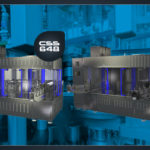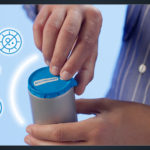History and curiosities of the aluminum drink can
A success story that passes through anecdotes, curiosities and technical aspects. Without forgetting the contribution of Ecocap’s.
Non-resealable airtight container: this is how the can is defined.
The origin of the name comes from afar and refers to the material with which the first cans were born, precisely tin, an iron sheet on which a thin patina of tin is placed.
The production of the first cans dates back to 1957, which immediately had a moderate diffusion linked in particular to the characteristics of aluminium, malleable, light and cheap.
Beer was the first drink in a can. Made of tin, they were marketed in the 1930s in Richmond, Virginia. Previously, the attempts made had failed, for two reasons:
- in contact with the liquid, the metal released substances that altered the flavour and were dangerous to health;
- the carbon dioxide caused the volume of the contents to swell up until the can burst.
The solution was found by the Gottfried Krueger Brewery which in 1935 marketed the first beers in tin cans. The success was completed by replacing the tin with aluminium: a unique and performing material.
CANS: SHAPE AND CHARACTERISTICS
The classic aluminium can used for soft drinks is made up of two parts: the cylindrical body and the bottom are obtained through drawing, while the printed lid is applied by seaming.
Among the pluses of aluminium is the reduction in thickness, a tenth of a millimetre, as much as a sheet of paper, associated with considerable resistance: the aluminium sheet can withstand a pressure of 6 atmospheres.
Over the years, the cans have been modified several times, starting with the opening. At first, the top was airtight and a hole had to be drilled to open it.
Subsequently, in the early 1970s, the outward flap opening was introduced. With Pepsi Cola cans, the safer push-in opening appeared.
Another significant innovation dates back to 1975: the tab that remains attached to the can, more ecological and with a lower environmental impact than the previous ones.
The result of in-depth studies, the cylindrical shape of the can is a good compromise between the need to optimize space in logistics and protect ergonomics.
The tab has been designed to facilitate opening, while the decision to keep the lower part concave serves to distribute the weight without using additional material to reinforce the ends of the can.
A CONTINUOUS EVOLUTION: CANS AND DESIGN
The sleek can is the new design of the can: slimmer and more elegant, it was introduced in 2005 in France.
At the basis of the evolution is the need to keep the contents intact (33 cl) while making the layout more ergonomic and pleasant: from 11.5 cm in height it goes to 14.5 cm with a consequent narrowing of the diameter.
This new style was chosen for the cans of Coca Cola, Fanta and Sprite, probably influenced by energy drinks which are marketed in narrow and long cans.
Pepsi has also paid a lot of attention to cans. In 2015, a competition was promoted, aimed at young designers, to revitalize the external appearance of the can. The goal of the project was to be able to amaze, stand out on the market, giving value to the container and not just the content.
A ductile and malleable material, aluminium allows planners and designers to give life to new and surprising shapes.
ECOCAP’S PLAYS ITS PART IN THE HISTORY OF CANS
Ecocap’s, with its TopSyl patent, has contributed to the innovation and restyling of the style of the cans, making them more hygienic and safer at the same time.
Ecocap’s caps, made of aluminum and heat-sealed to the can without the use of glues, in fact offer brands a new space for communication and marketing, while simultaneously offering important guarantees in terms of safety, practicality and cleanliness.


